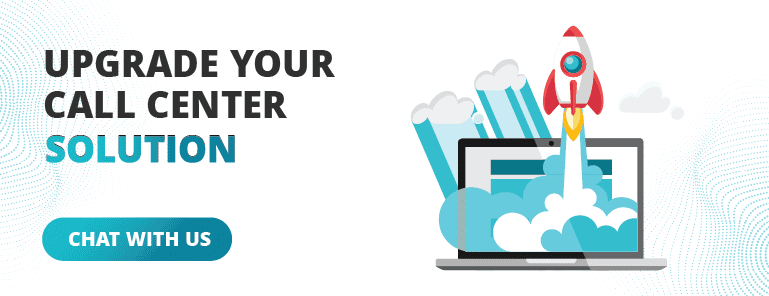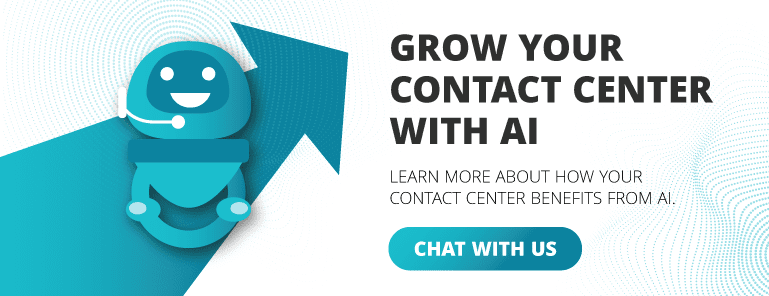If 2024 was the year of AI hype and CX buzzword bingo, then 2025 should be the year we all get back to basics. And most specifically, that means giving our contact center reporting a good hard look to see if it’s actually working for us. After all, it’s not just about the pretty dashboards and KPI trackers. We should have the information to help us build insanely intuitive data-driven powerhouses that drive strategic growth, improve customer satisfaction (CSAT), and optimize operations.
It’s time to move your contact center reporting from a back-office chore to a front-line tactic in your operational arsenal. Let’s dig into why reporting should be a top priority moving forward. Then, we’ll give you a glimpse into our newest analytics tool that lets you see data from your entire customer journey from a single source of truth.
Want a quick look at what our Advanced Analytics tool can do for you? Scroll down.
The Current State of Contact Center Reporting: A Swing and A Miss
Take a hard look at your current reporting setup. Chances are, it’s not delivering what your team needs. Many contact centers rely on legacy systems or bolt-on analytics that do little more than track basic KPIs like average handle time (AHT) and first-call resolution (FCR).
The problem? These metrics, while useful, only tell part of the story. Without deeper insights into agent performance, customer behavior, and interaction trends, if you want to make improvements, you’re left guessing.
In 2025, the contact centers that thrive will be those using advanced analytics systems. These platforms provide real-time visibility, trend analysis, and predictive insights.
Real-Time Data
In the age of instant everything, waiting for end-of-week reports is like trying to steer a ship while staring at last week’s map. Real-time contact center reporting gives you a way to monitor what’s happening right now—and then act on it.
- Spot emerging issues: Did a sudden spike in call volume just blow your SLAs out of the water? Real-time reporting flags the problem before it snowballs.
- Manage agent performance: If an agent is struggling with handle times, you’ll know ASAP. Then, you can intervene with targeted coaching or support.
- Optimize customer journeys: Find bottlenecks and pain points in real-time. Then, make tweaks and adjustments to improve your CSAT.
Real-time data puts you in the driver’s seat. It gives you a way to pivot or adapt without delay.
Customer Journey Mapping
Mapping the customer journey lets you see how every interaction either builds or busts customer trust. Contact center reporting, enriched with data from both UCaaS and CCaaS, creates a unified data ecosystem. And that gives you:
- End-to-end visibility: Track a customer’s journey from their first inquiry on your website to their most recent support interaction.
- Enhanced analytics: Merge communication data (e.g., calls, video meetings) with contact center metrics to get a full picture of the customer experience.
- Proactive solutions: Spot issues early, like repeated service calls or unresolved tickets, and address them before they escalate.
The Link Between Reporting and CX Excellence
A strong customer experience leads to your customers spending more.
Some 86% of buyers are willing to pay more for a great customer experience. And according to research from PWC, the more expensive an item is, the more they’re willing to pay. The study found customers are willing to pay a premium of 13% (and even as high as 18%) for luxury and indulgence services, simply by receiving an outstanding customer experience.
What’s more, 49% of buyers have made impulse purchases after receiving a more personalized experience.
And contact center reporting plays a direct role in delivering those experiences.
When you understand your data, you can:
- Identify trends in customer complaints and fix root causes.
- Tailor agent training programs based on real performance insights.
- Benchmark your performance against industry standards and competitors.
In short, great reporting isn’t just about keeping tabs on what your contact center is doing. It’s about understanding how your operations impact your customers—and then doing something about it.
Overcoming the Data Overload Challenge
Let’s address the elephant in the room: too much data, not enough clarity. For many contact centers, the problem isn’t a lack of data—it’s the overwhelming flood of it.
This is where modern reporting platforms shine. They don’t just dump spreadsheets of raw numbers; they deliver actionable insights.
- Customizable dashboards: See the KPIs that matter most to your team, whether it’s Net Promoter Score (NPS), average wait time, or agent occupancy.
- Automated alerts: Get notified when metrics deviate from acceptable ranges, so you don’t have to dig through reports to find problems.
- Visual storytelling: Use graphs and charts to turn complex data into digestible insights that everyone on your team can understand.
By cutting through the noise, the right advanced analytics tools empower your team to focus on what matters most.
Feature Spotlight: Inside Broadvoice’s Advanced Analytics
Advanced Analytics is our enhanced contact center reporting and analytics tool. It’s designed to let you visualize your data, drill into it, and then customize your segmentation. This lets you perform regular, in-depth analyses of your center’s operations based on your unique needs.
It also includes a call journey analysis feature that maps your customer interactions between platforms so you can fully understand and optimize your customer journey – from start to finish.
A Few FAQs
Q.What are the benefits of using Advanced Analytics?
A.It gives you actionable insights so you can make strategic, data-backed decisions about your customer experience. It also helps you to ID operational inefficiencies, trends in customer and agent behavior, and service anomalies. Armed with this information, you can make sure both your people and your processes are as impactful as possible. And that lets you proactively problem-solve, increasing customer and agent satisfaction.
Q.What roles should have access to the reporting and analytics data?
A.Data can (and should) be shared with anyone who’s making decisions about your customer experience. The folks we see working with the data most are operations supervisors, service managers, call center managers, BPO executives, UCaaS users, and CCaaS outbound supervisors.
Q.What if I need to send a customized report to my executive team? Can I do that without sending all the day-to-day details?
A.Yes, absolutely! You can send customized reports to your executive team automatically. This gives them the exact data they want and need to make decisions, without burying them under unnecessary details.
Q.How can I learn more?
A.For more information or to schedule a demo, connect with our team here.












